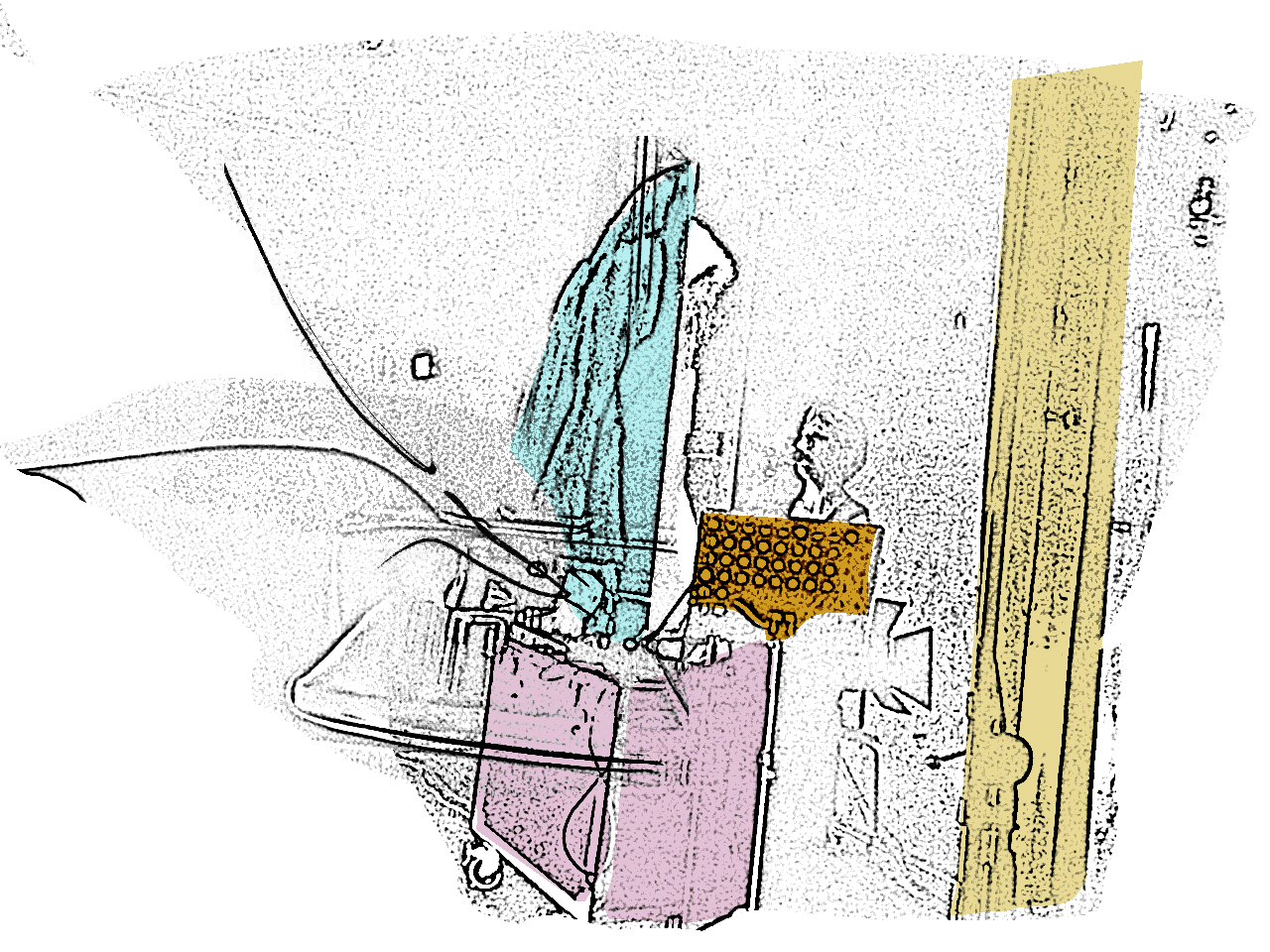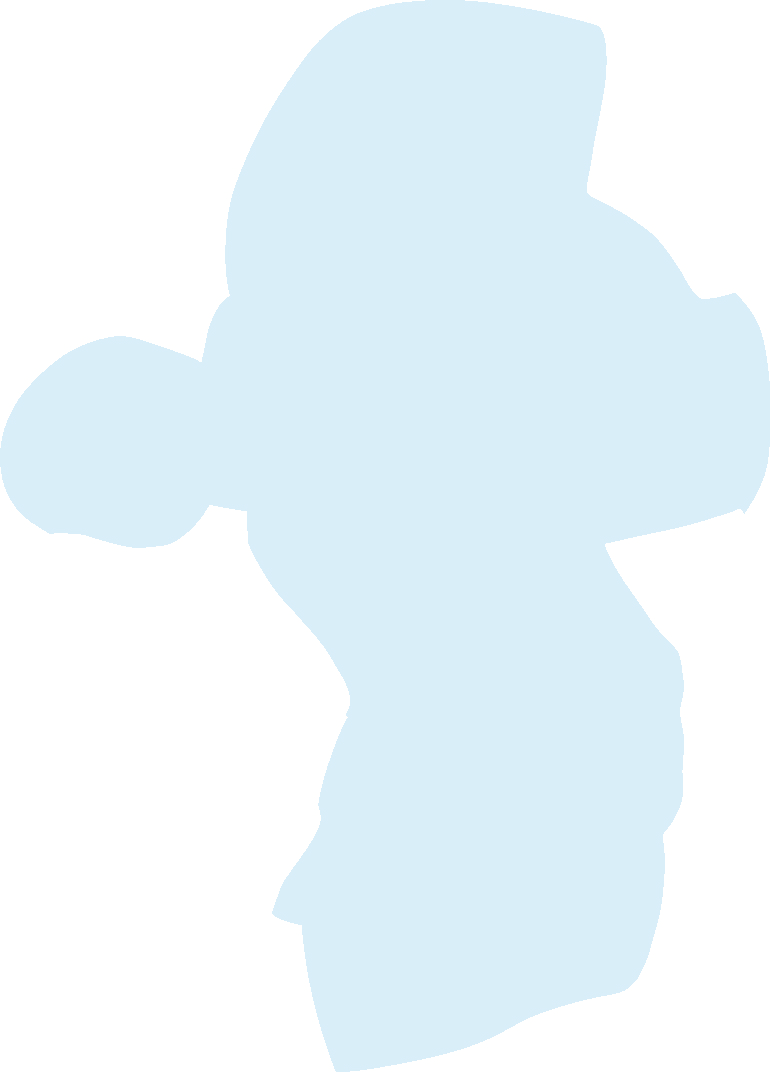Table of contents:
Introduction: A Concern for the Welfare System
I. From Discourse to Narrative
II. Juxtaposing Temporal Structures
III. The Script as Event Score
IV. The Dramaturgical Function of the Music
V. Circulating the Artistic Decision Making
Epilogue: Death to The Welfare State
About the authors / References
IV. The Dramaturgical Function of the Music
The Storyteller: The old dog was dead and suddenly it was as if the little farm looked like every other farm in the landscape. The animals felt completely lost. They were no longer unique in their kind. When the crisis was at its deepest, a young pig began to think about whether the best thing after all was to abandon the ‘small farm model’. The young pig thought: the general welfare is no longer working. Is it not better than to introduce big tax cuts and reduce the farm's costs in terms of education, legislation, culture and the media? (Dahlqvist 2018. our translation)
The music in Död åt välfärdsstaten was constantly present, which at times made the performance seem more like a staged concert than a theatre performance. The relation between the music, the discourse, the narrative of the animal farm and the other performative elements could be described as polyphonic, i.e., as independent layers that were superimposed, interlocked, and mirrored through each other. These layers were connected through ‘vertical dramaturgy’ (Dahlqvist & Olofsson 2017, Olofsson 2018) and formed a new narrative. Vertical dramaturgy could be defined as the way elements in a performance may react to each other, for example, “how pre-recorded sounds or spoken voices respond to an action performed on stage, how a change of a light scene causes a musical change, or how a musical gesture may start a video film” (Olofsson, 2018 p. 175). This approach opened up the possibility of interpretation and meaning-making for the spectator because of the perceived causality that emerged when connecting events in the various layers.
In some parts there was a direct link between the political content and the music (ex. part 2-2 and 3-1) where we used documentary recordings of political speeches as well as texts recorded by the actors. The recorded voices were echoed through a range of different sound processes, creating soundscapes that emerged in certain sections, sometimes very subtle, almost inaudible, sometimes stronger and more prominent. Through this, the voices of the actual politicians and the discourses in the texts became sonic bridges between discursive statements and performative elements in the performance.
As stated earlier, the music was present in almost all parts of the performance but there were also exceptions. In part 4 (ex. part 4-1), there are two actors and two dancers on stage but no music. The actors are discussing the idea of the welfare state:
The Owl: So you’re saying that the welfare state pacifies all animals?
The Pig: Yes, basically I mean that, yes.
(Dahlqvist 2018. our translation)
These two sentences are repeated, over and over again. The mantra simultaneously enacts the passivity by presenting a conversation stuck in a loop and underlines the ideological opinion through the repetitions. Even if there is no music in this part of the scene, the spoken text and the choreography has a palpable musical feel to it. Also, the song that follows, where the actors disappear and the choreography continues on its own, becomes a strong response to the situation, thus making the music become a narratological consequence to what preceded it.
The creative and collaborative process of the musical composition
The music altered between a wide variety of styles, expressions, and techniques; interweaving pop songs, electroacoustic music, sonic textures, beats and live looping with an immersive sound design. Some of the music that was used in the performance was composed beforehand and for other contexts. A piece of electroacoustic music, The Field of David Smith by Kent Olofsson (the author of this article), was incorporated in the performance (ex. part 1-2, 2-3 and 3-1). Other musical sections were created to support the choreographies in the performance (ex. part 3-1). And yet other material was improvised live (ex. part 3-2), as when Lise Kroner’s voice was used as the main source for the electronic processes, utilising extended, and virtuoso, vocal techniques through live electronics.
The pop songs in Död åt välfärdsstaten were written by Kent Olofsson, Lise Kroner and Niklas Nilsson (audio recordings of the songs can be found on the documentation page). The composers worked independently and together, creating material and drafts for songs, beats, texts, and electronic sound material that could be brought to the rehearsals and production. Much of the initial work was made in the recording studio with Lise and Nicklas respectively, where ideas for songs that could possibly be part of the performance were drafted. Through this work it was possible to improvise and experiment with different expressions. The beat-based electronic music with voice, electric guitar, and live electronics that was used in the performance was a result of these explorations (ex. part 5-1).In several cases the original song lyrics were kept, unrelated to the theme and concept of the performance – through the context, these lyrics became mirrored in the political themes and in the story of the animal farm, and were projected with new meaning. However, this was not the case for all of the songs. Hello dogs (ex. part 4-2) was composed with a specific purpose in the narrative, as an imaginative song that the pigs would dance to when celebrating a success in life.
The music had a prominent role in the staging. On the one hand, the music framed events and emphasised emotions and expressions in the narrative, and on the other it also had an independent expression that contributed to the shaping the overarching temporal structure, providing a framework which allowed the narrative and the discursive statements to be presented, somewhat fragmented when moving between the different layers. In addition, it contributed with performative material to the other art forms. However, the link between music and the other arts were bi-directional; choreography, for example, helped to form a strong connection between music and acting, first by situating the music and text in the performer’s bodies through choreographed movements, and second as an independent expression that could complement and contrast the music and the spoken text.
It was important that the songs had to fit in the structure in relation to all the other elements and to the trajectories of the different layers of text, acting, video and choreography. In rehearsals, the musical material was moved around, expanded or contracted in relation to the overall needs of the staging. Music that needed to be recomposed, rearranged, or remixed during the few days leading up to the premiere was altered between rehearsals. The extensive material that had been created beforehand in the studio made it possible to do so. This open and flexible approach to the form and content of the musical material allowed for the musical composition to be an important tool for enabling the vertical connections in the performance. To be able to do so, there was an on-going conversation between all artists, when creating and shaping the performative elements, during the whole production process.
Finally, the roles of the composers and musicians were not only to create and perform the music. In the performance their roles changed, just as for the other artists on stage. The musicians were all part of the collective choreography described above (ex. part 3-1). They were also used as actors, reading one of the political speeches, or enacting the death of the old dog (ex. part 3-2). In the latter scene, the dog falls dead to the ground after being murdered, then, in an extended, emotionally almost unbearable, musical performance, the ghost of the resurrected dog sings and cries out the grief over the unthinkable; an incident that will change the small farm forever.
PART 4-1
Throughout the performance music strengthens the dramaturgical structure. It also adds to the existential striving by emphasising the emotional in the dramatic situations – without losing its own intrinsic value of ‘being music’. Also, a sense of musicality is present, as in the start of part 4, in sections with no sounding music.





